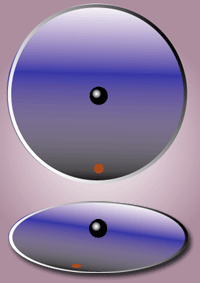The Coriolis Effect
We live on a spinning planet. Every 24 hours, Earth makes one rotation on its axis. This spinning makes the study of the atmosphere a little more complex than it otherwise would be. You have just learned how the unequal solar heating of Earth drives the motion of the atmosphere. Were it not for the fact that Earth spins, warm air from the equator would rise and flow non-stop toward the poles until it sank. However, air on the spinning Earth is deflected by the planet’s rotation. Thus, atmospheric motion is affected not only by unequal solar heating, but also by Earth’s spin on its axis. Click through the tabs below to learn more about how Earth’s spin affects the atmosphere. You can get an idea of how the atmosphere is affected by Earth’s spin by imagining a playground merry-go-round, like the one seen in the movie below.
Movie Demonstration
This video will help you visualize how Earth’s spin affects the atmosphere. Think about how the merry-go-round is like Earth and the ball is like moving air as you watch this video clip.
Click on the image above to
watch What Is The Coriolis Effect?
The Coriolis Effect

This deflection of air by Earth’s rotation is called the Coriolis effect, where air at Earth’s poles tends to veer in certain directions due to Earth’s spin. Air from the Northern Hemisphere appears to veer to the right, and air in the Southern Hemisphere appears to veer to the left. The Coriolis effect is derived from Newton’s first law of motion, which states that a body in motion keeps its speed and direction unless acted on by an outside force. In the case of Earth’s atmosphere, the Coriolis effect means that the spin of Earth acts on moving air to deflect it in certain directions at different places on Earth.
